Customers often forget about a brand, or subscribers lose track of a newsletter if they haven’t interacted with them for a while. This happens a lot in today’s busy world full of distractions and many brands trying to catch their eye.
There’s a saying, “Out of sight, out of mind.” If a brand isn’t regularly connecting with its audience, it might get forgotten. To avoid this, marketers use reactivation email campaigns. Reactivation email campaigns help establish interest and reconnect with an inactive audience. They remind people of what the brand or newsletter offers and help increase engagement and retention.
What is reactivation email
A reactivation email is a marketing strategy used to reconnect with inactive subscribers or customers who haven’t interacted with a brand for a while.
These emails aim to refresh their interest and encourage them to re-engage with the brand. Reactivation emails often feature personalised content that matches the recipient’s interests and past interactions. This content could include special offers, updates about new products or services, or reminders of the benefits of the brand. The goal is to get the recipient to take an action, like visiting the website, making a purchase, or signing up for a newsletter again. Brands use these emails to rebuild their relationship with users and boost ongoing engagement and sales.
Steps to re-engage inactive customers
Identify inactive customers
The first and most important step in this process is to first identify customers are inactive. Without proper identification, the campaign will have wrong targeting and can have poor results.
First, decide what “inactive” means for your business. It could be someone with no purchases for 30 days or no logins for six months; it all depends on your scenario. Use your CRM or customer database to find users who haven’t interacted during that time.
Segmenting these users is important because it allows you to create personalised messages based on their past purchases, demographics, or reasons for disengagement.
Establish helpful communication
The next step is to set up a useful way to communicate, since sending promotional messages directly may not work in the best possible way. It’s important to have helpful and healthy communication in place before you actually send any promotional content.
A good way to do this is by sending email newsletters that share helpful information without too much marketing. It could be an informative guide, an industry-relevant case study, or something similar.
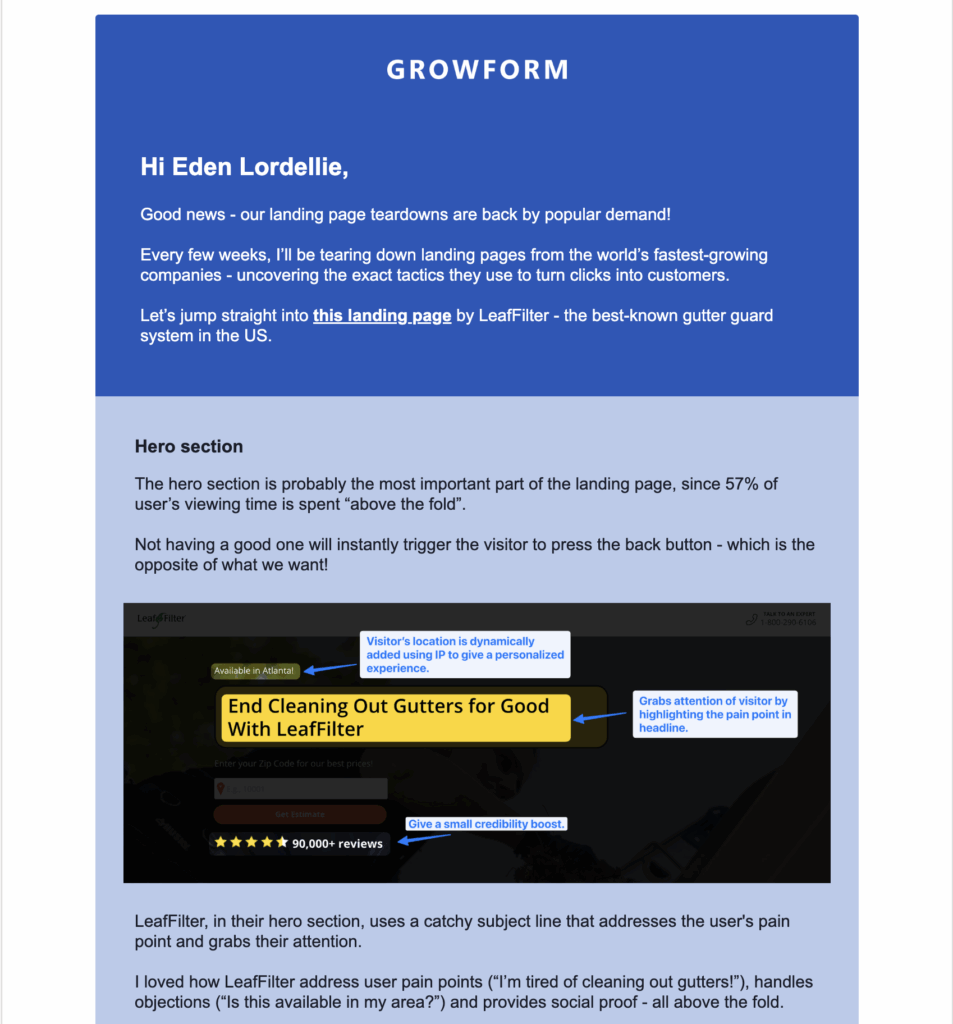
Above is an email newsletter by Growform, which primarily focuses on informative and useful content rather than directly marketing their product. This makes the recipient feel connected.
Send an offer
Once you are communicating regularly, it’s time to motivate your inactive customers to return to the platform or make a purchase.
This can be achieved by giving the right incentive to bring a customer back and restore their interest in your brand. Consider these following proven strategies:
- Exclusive discounts or limited-time offers that make customers feel they’re getting something truly valuable just for coming back
- Free trials or bonus products designed to lower their risk and offer extra value for their loyalty
- Personalised recommendations based on past behaviour, showing that you understand their preferences and can provide exactly what they want
Above all, make sure your offer stands out as something special – and clearly communicates that you sincerely appreciate their decision to return. When customers feel recognised and valued, they’re much more likely to re-engage with your business.
Use multi-channels
Don’t just use email to contact your audience. Try different ways to reach them. For urgent or time-sensitive offers, SMS messages work well because people see them quickly. Retargeting ads on social media are also helpful to reconnect with people who have already shown interest in what you offer.
Setup email automation
Setting up automated emails for reactivation is a good idea. For example, you can send a welcome guide to help users get started, notify them when their trial is ending, and ask for feedback about their experience.
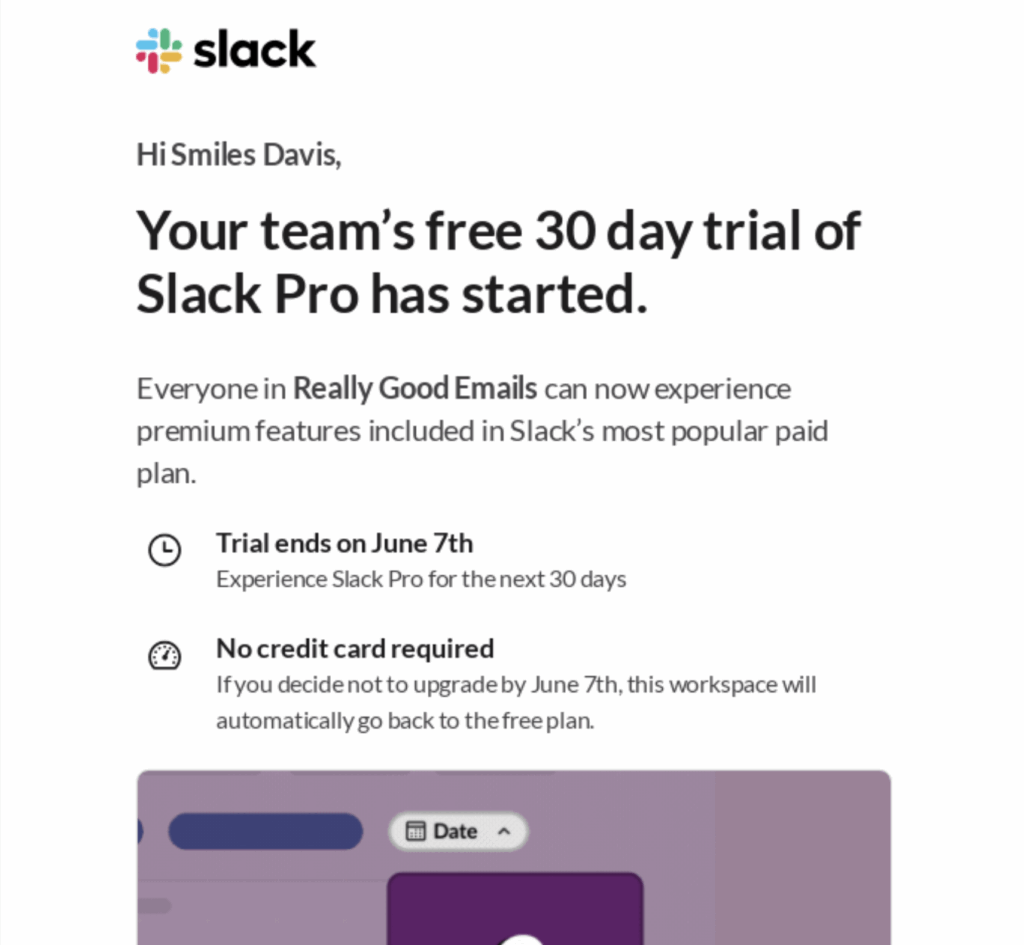
These automated emails help you reach out to users at important times, encourage them to become active users, and build better relationships with them through timely and relevant messages.
Best reactivation email campaigns
There are several great reactivation and re-engagement emails that can be found on Google, but most of them have a similar template. For a quick understanding, let’s look at some well-known examples.
ProductHunt
ProductHunt uses re-engagement email campaigns to inform users who haven’t logged in about what they are missing. They plan to leverage FOMO (fear of missing out) by highlighting popular launches to encourage users to return to the platform.

Weebly
Weebly’s email is a bit different from ProductHunt’s email. They understand that some users might have abandoned their platform because they found it difficult to use. To fix this, Weebly’s email contains links to guides which can potentially make users return to the platform.

Belgian Boys
The re-engagement email by Belgian Boys follows a style that’s used by several e-commerce and D2C brands.

It’s a colourful, catchy email that just focuses on good copy and conveying the message. However, this email can be made more effective by giving away a personalised coupon code.
Auto Trader
Auto Trader’s re-engagement email is a simple one which is common among newsletters.
It’s a straightforward email purge aimed at inactive subscribers as a final attempt to re-engage them. In cases where recipients do not respond to this email, they are removed from the list. This approach also helps reduce subscription costs, as most email marketing tools charge based on the number of contacts or subscribers.

How to send a reactivation email campaign on EmailOctopus
To send a re-engagement campaign, start by identifying inactive contacts using a segmentation feature. Create a segment based on contact activity to locate those who haven’t engaged recently.

When planning the campaign, use engaging subject lines to capture attention and personalise emails with subscriber names. Clearly explain your purpose and offer a value proposition, along with an incentive to stay subscribed. Include a clear call-to-action (CTA) and an easy unsubscribe option.
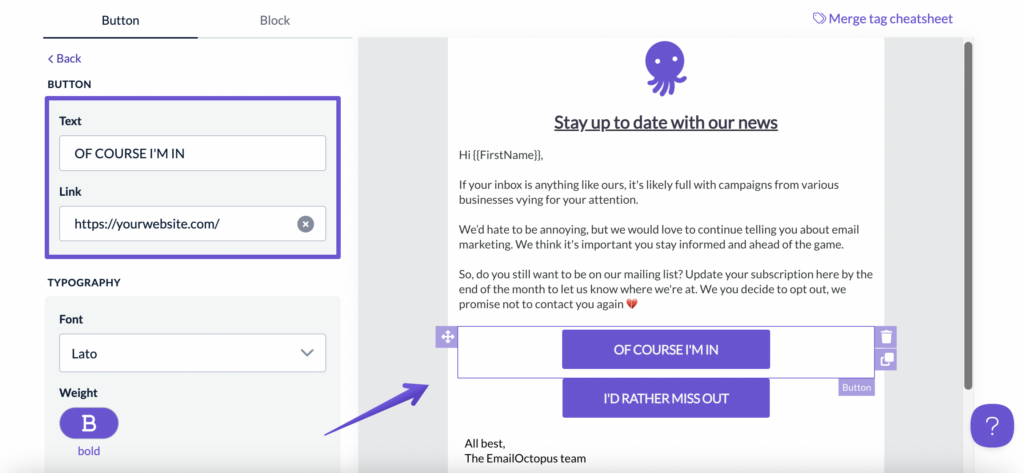
The “I’d rather miss out” call to action should always be hyperlinked with {{UnsubscribeURL}}. Not doing this might make you email non-com plaint with several privacy laws.
After sending the campaign, set a deadline for recipients to respond. Finally, suppress inactive contacts based on their lack of engagement with the campaign, maintaining a clean list for better sender reputation and email deliverability. It’s advisable to repeat this process every few months.

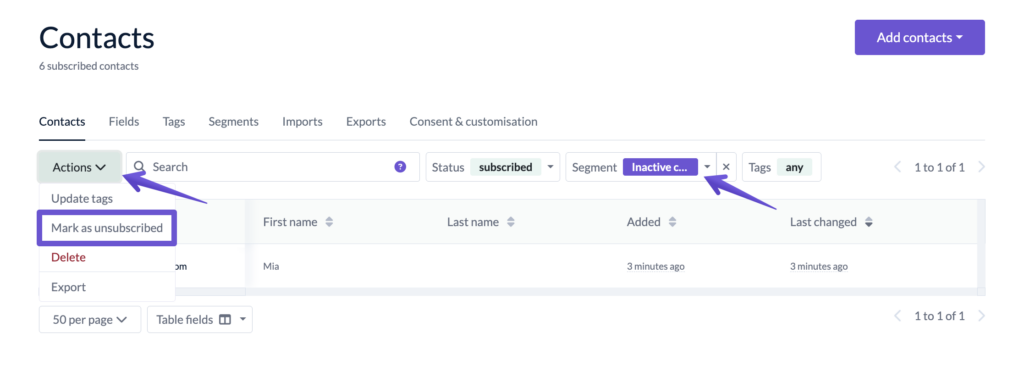
Here’s our detailed guide on how to send reactivation email campaign on EmailOctopus.
Best practices
When planning and sending reactivation email campaigns, it’s important to focus on the best practices to ensure effectiveness and compliance:
- Segmentation: Before sending a campaign, segment your audience to target only those who are truly inactive. This approach ensures that you don’t disturb active subscribers who are already engaged.
- Personalisation: Use personalisation techniques to make recipients feel valued. Address them by their names and tailor content based on their previous interactions and preferences.
- Clear value proposition: Highlight what the subscriber will gain by re-engaging with your brand. Whether it’s access to exclusive content, a special discount, or other benefits, the value should be clear.
- Use catchy subject lines: Create exciting subject lines that make people want to open the email. A good subject line can be the difference between reconnecting with a subscriber and losing a chance.
- Concise and engaging content: Keep your messages clear and engaging. Avoid lengthy paragraphs and focus on using short, impactful sentences. Visual elements can help communicate your message more effectively.
- Strong call-to-action (CTA): Make sure your CTA is prominent, clear, and actionable. Guide the recipient on what steps to take next, whether it’s visiting your site, redeeming an offer, or updating their preferences.
- Easy unsubscribe option: Always include a simple way for recipients to unsubscribe. Not only is this a legal requirement in many jurisdictions, but it also helps maintain a healthy and engaged subscriber list.
- Follow-strategy (optional): You can also have a follow-up plan for those who don’t respond to the initial reactivation email. This could involve a series of emails or a final notification before removing them from your list.
By using these best practices, you can effectively reconnect with your inactive subscribers, boost brand loyalty, and improve overall email marketing performance.
Conclusion
Reactivation/re-engagement email campaigns are a must if you have an email list that’s old and has contacts that haven’t shown any sign of engagement for quite some time.
By using effective segmentation, personalisation, and creating engaging content, you can reconnect with inactive users. Applying best practices like clear value propositions, interesting subject lines, and strong calls to action can increase engagement. Regularly planning these campaigns helps keep subscribers engaged, boosting brand loyalty and improving email marketing results.
Additionally, feel free to give EmailOctopus a try for all your email marketing needs. It’s free for up to 2,500 subscribers.
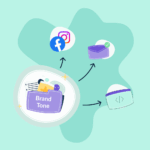

No Comments
Leave a comment Cancel